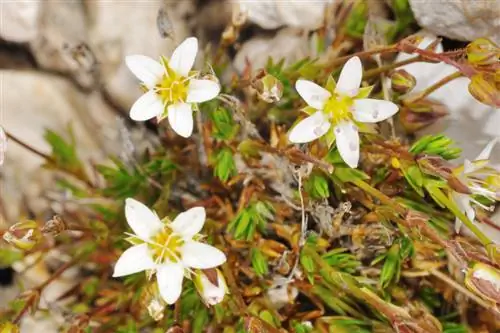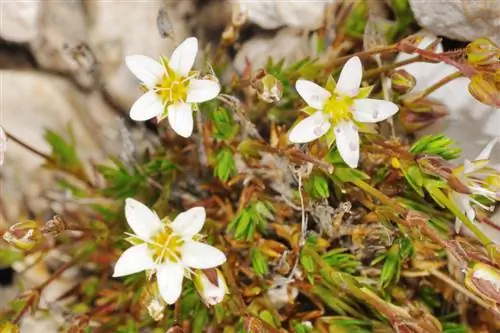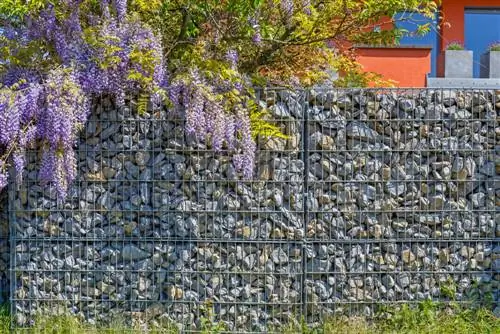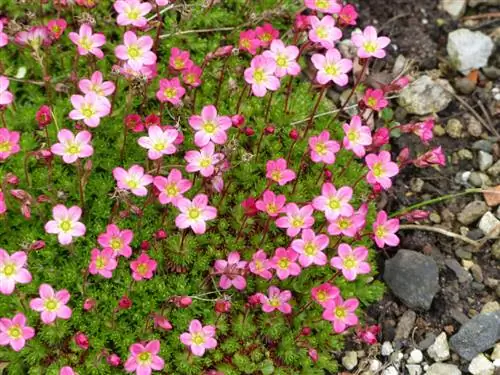- Author admin [email protected].
- Public 2023-12-16 16:46.
- Last modified 2025-01-23 11:20.
The so-called moss saxifrage (Saxifraga arendsii) is a particularly low-growing subspecies of saxifrage. Like other species of the genus Saxifraga, the moss saxifrage can be used perfectly as a cushion-forming plant in rock gardens or as a perennial flowering plant on natural stone walls.

Is the moss saxifrage hardy?
The moss saxifrage (Saxifraga arendsii) is generally hardy, but requires winter protection by covering with leaves or twigs for freshly planted specimens, cold frosts or breeding specimens from the greenhouse. Also ensure there is sufficient moisture and avoid waterlogging.
Winter protection: only necessary for freshly planted specimens and clear frosts
As a plant originally native to the high mountains, the saxifrage is generally hardy even in very cold areas. For various reasons, covering the moss saxifrage with leaves or twigs can make sense:
- for breeding specimens from the greenhouse
- for specimens planted relatively late in the year
- in winters with clear frosts
In the high mountains, a blanket of snow usually protects the saxifrage from severe frost until spring. Cold frosts are cold winter periods without snow cover, which can hit some plants hard. Saxifrage plants grown in front of stone walls can therefore react more sensitively to frost because they are heated strongly by the sun during the day and their protective snow cover melts away.
Don't let the moss saxifrage die of thirst in winter
If the moss saxifrage has a hard time getting through the winter, it doesn't have to be because the temperatures are too cold. Although the saxifrage should, if possible, be planted in a location with permeable soil, you should not let it dry out either. Before the onset of winter, check whether there is still sufficient contact between the roots of the moss saxifrage, which are only slightly deep, and the ground. Sometimes heavy growth or rain-related washouts can cause this direct contact to be lost and a cavity to form under the plants.
Be careful with waterlogging and acidification
It's not just drying out that can cost your moss saxifrage its life, it also has a hard time withstanding persistent waterlogging. You should therefore loosen up very heavy and clayey soils by mixing sand and gravel into the substrate. Please also note that various conifers and conifers in the vicinity of the moss saxifrage can lead to a slow acidification of the soil and the moss saxifrage sometimes appreciates a little lime when caring for it.
Tip
The seed capsules of the moss saxifrage only begin the germination process after a pronounced cold phase. In the open field, however, it can be very difficult to distinguish the delicate plants from weeds in spring. That's why it usually makes more sense to collect the seeds, expose them to frosty temperatures and then grow them in bowls in a controlled manner.






